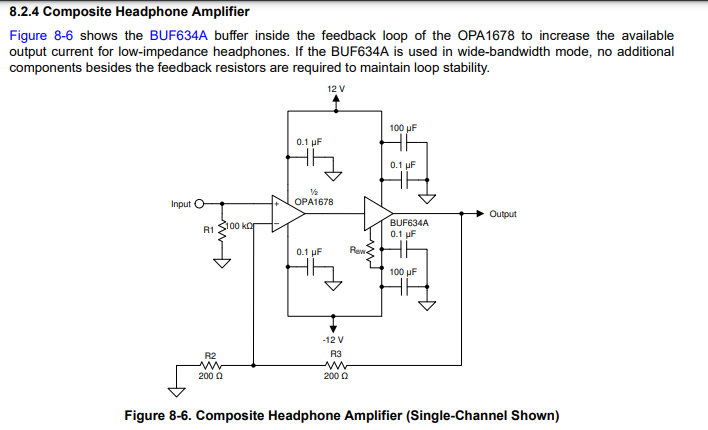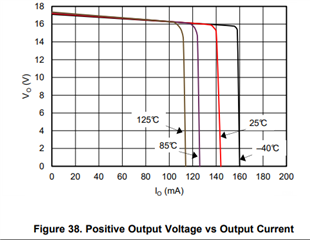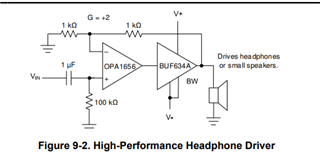Other Parts Discussed in Thread: BUF634A, , OPA1622, OPA134, OPA1688, OPA1678, BUF634, OPA1656
I would like some discussion of a dual INA1620 headset driver circuit version of this, higher supply voltage, compared to an op amp/BUF634A approach (possibly using two BUF634A's in parallel).
There are several circuits on the net for each approach. Not sure what to use for the op amp with the BUF634A 's- seen AD844, OPA1622, OPA1688, OPA134, etc. I'm thinking I will need more power than this circuit is providing but supplies may be limited to +/-12V or so. I'll likely purchase the eval boards for each chip.





